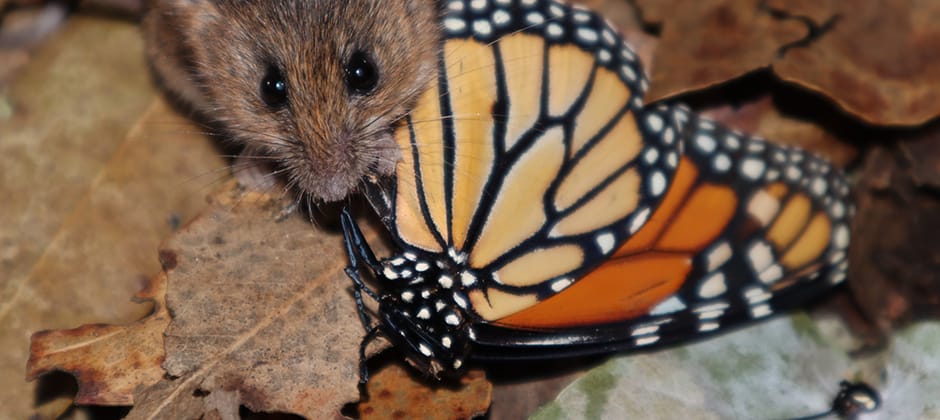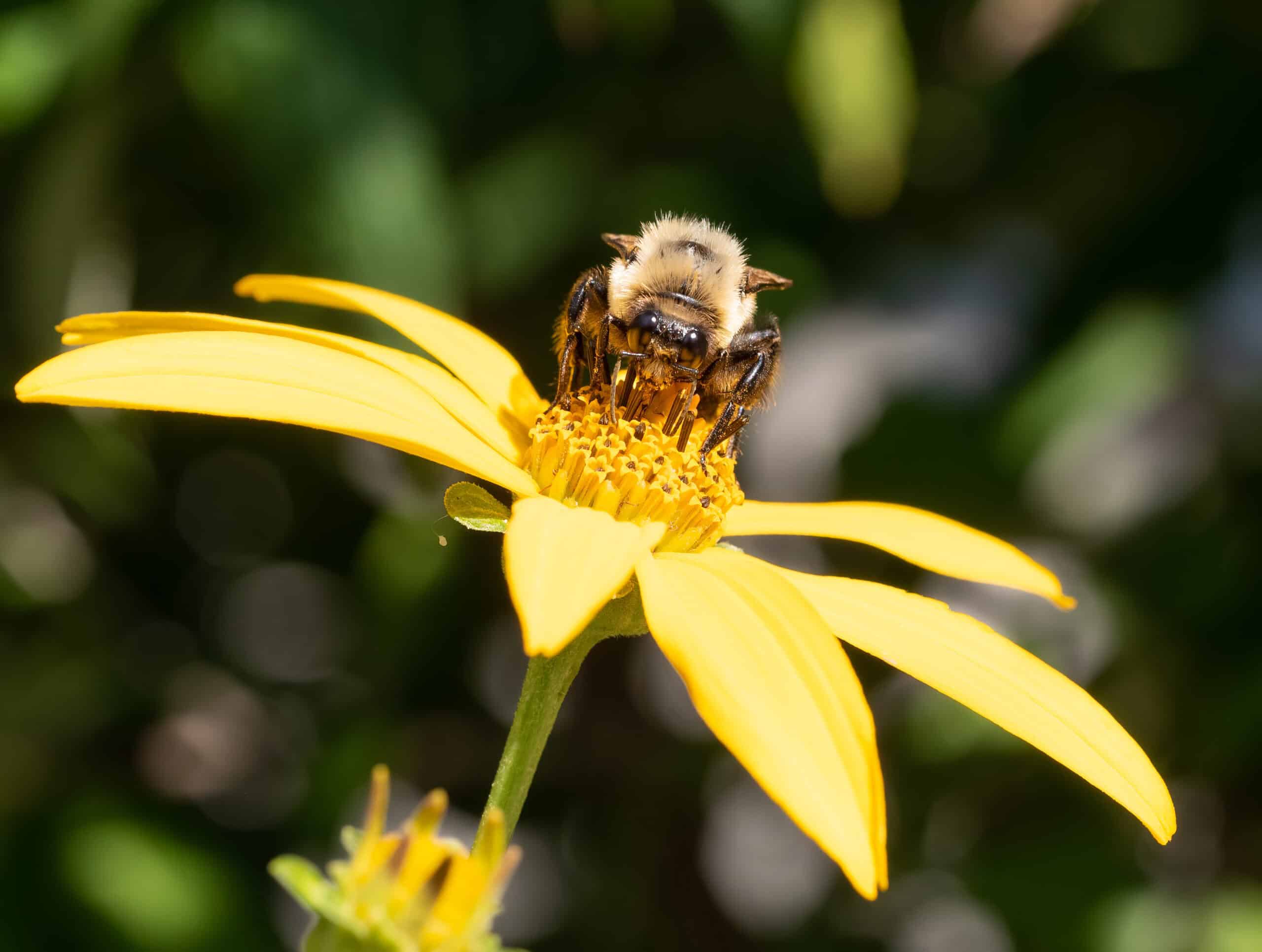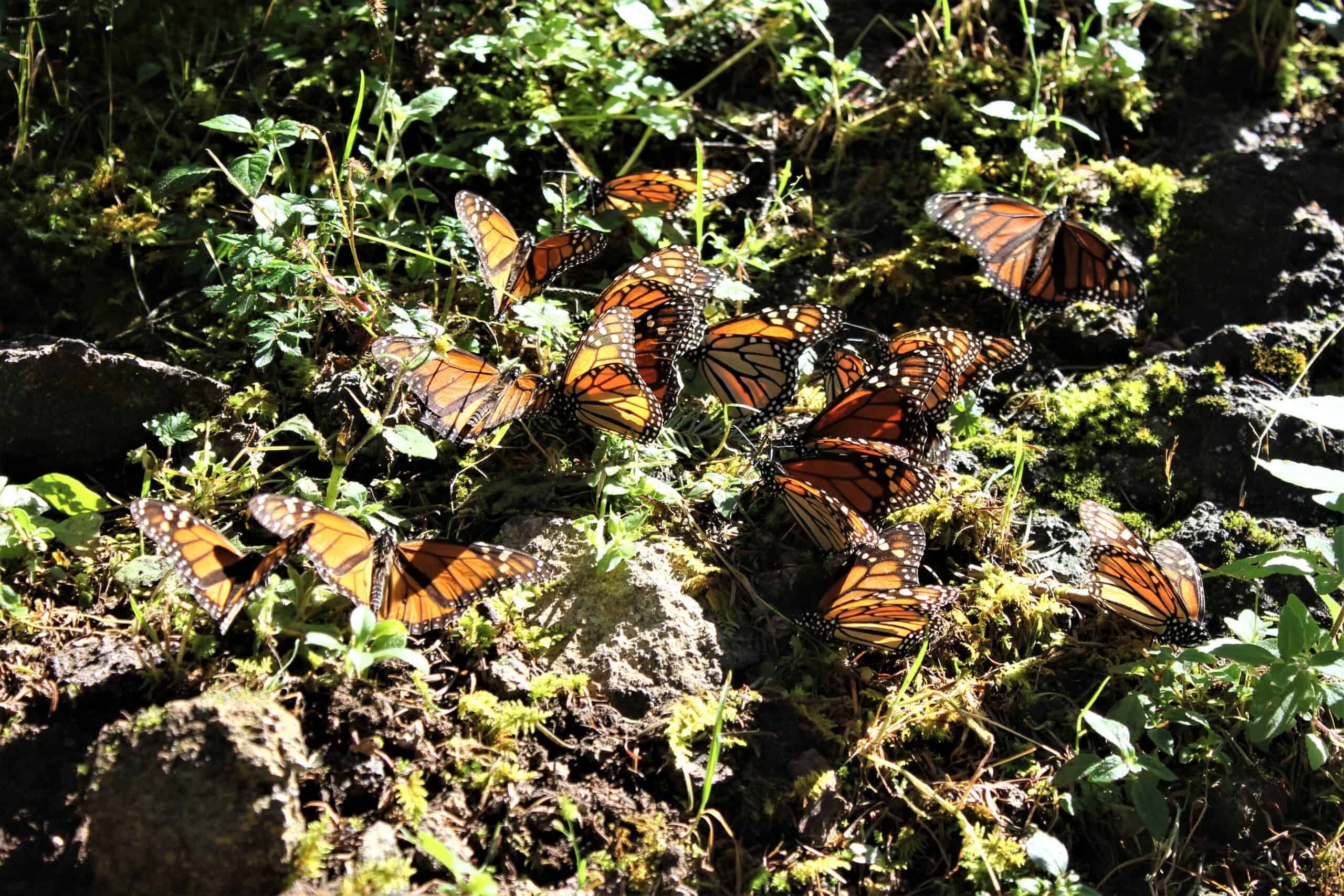Share this article
Mice make a meal out of monarchs
Western harvest mice in California may be feeding on monarch butterflies overwintering there, providing just another reason why conserving the declining insect species may benefit the ecosystem.
Monarchs aren’t palatable to most predators. The butterflies eat plants that contain toxins called cardenolides that make them taste bad. But researchers knew of rodents that didn’t turn up their noses at these toxins. In East Africa, giant poisonous rats (Lophiomys imhausi) sequester cardenolides from plants.
That was the species Sara Weinstein, a postdoctoral researcher at the University of Utah, first had in mind to study.
“We were trying to understand how these rodents were able to sequester these toxins, but this was a fairly difficult system to work with,” Weinstein said. “It’s not only on the other side of the planet. We’re also dealing with an animal that’s pretty hard to find. They’re nocturnal and incredibly elusive.”
Then she thought about Mexico, where black-eared mice (Peromyscus melanotis) had been known to consume monarchs (Danaus plexippus). “We were getting closer,” she said, “but there’s logistical challenges to working there as well.” Safety issues and COVID-19 concerns raised other issues.
So, Weinstein and her colleagues turned to California’s Pismo State Beach Monarch Butterfly Grove, home to overwintering western monarchs and the western harvest mouse (Reithrodontomys megalotis). But bad luck hit. When the team planned to study them, no monarchs had shown up. But the mice were still there.
Thinking on their toes, she and her colleagues turned to testing whether the mice would consume lab-raise monarchs that had been dried. They published their results in a study in Ecology.
The team set out wildlife cameras, which they modified by sticking a reading glass lens over them, so they could see the interactions better. Two feet in front of each camera, they placed a single butterfly.
“We put these dried butterflies out under cameras to see what the mice would do,” Weinstein said.
They came back each morning and checked to see if the butterflies were still there. Then, they verified their findings on the videos the cameras produced. “Mice ate some of the monarchs, providing strong evidence that wild mice will consume this potentially toxic food,” she said.
Weinstein said this finding shows just how important insects are in mammal diets as well as how little we know about these types of interactions. “Here we have monarchs, one of the best studied insects,’” she said, “yet we still have this feeding interaction we don’t know about.” In many places, she said, the insect species are declining, and these are the types of interactions that may be disappearing before researchers can even discover them.
The good news, she said, is the western monarchs have increased in their last count from previous years. “But they’re still 90% less abundant than they were 20 years ago,” she said.
Header Image: A western harvest mouse feeds on a monarch butterfly. Credit: Sara Weinstein








